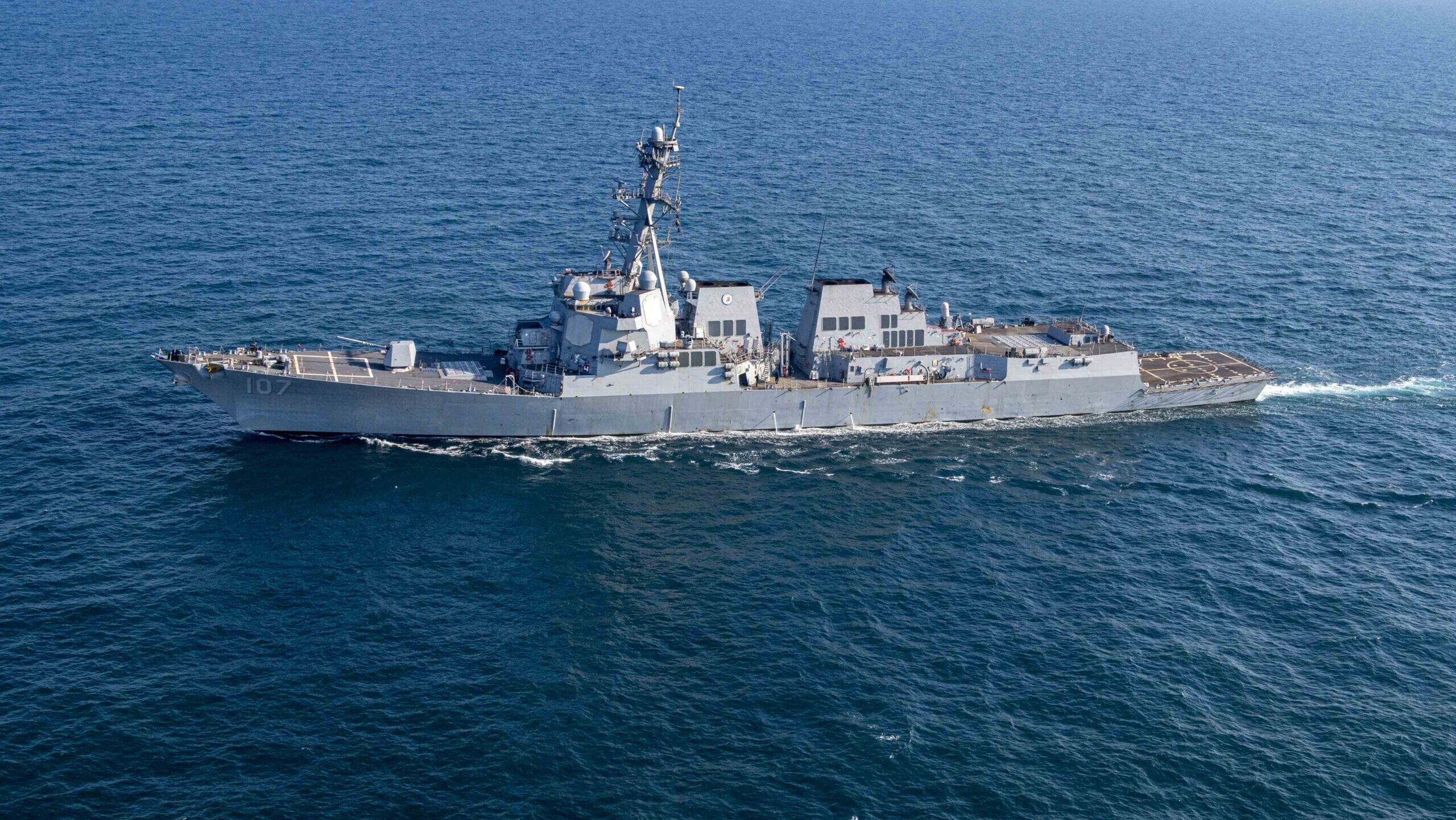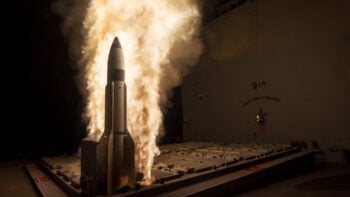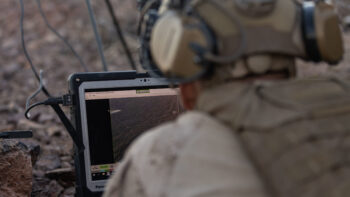
The guided-missile destroyer USS Gravely (DDG 107) sails in the Arabian Gulf Dec. 5, 2023. The Dwight D. Eisenhower Carrier Strike Group is deployed to the U.S. 5th Fleet area of operations to support maritime security and stability in the Middle East region. (US Navy photo by Mass Communication Specialist 3rd Class Janae Chambers)
WASHINGTON — In 2017, the US Navy was forced to reckon with the demands put on its surface ship crews following the tragic and fatal collisions involving the destroyers John S. McCain (DDG-56) and Fitzgerald (DDG-62). Seven years later, I think the Navy in 2024 may once again have to confront its operational tempo requirements.
The impetus for that examination could come from the unexpected obligations the fleet now faces in the Mediterranean and Red Seas. The crews of the Carney (DDG-64), Mason (DDG-87) and Thomas Hudner (DDG-116), all of which are being supported by other American ships in the region, in recent weeks have shot down or intercepted dozens of drones and missiles suspected of being deployed by enemies of Israel, which finds itself in a vicious ground conflict with Hamas.
[This article is one of many in a series in which Breaking Defense reporters look back on the most significant (and entertaining) news stories of 2023 and look forward to what 2024 may hold.]
Whether the United States is officially a party to the war in Gaza is a question best left to others. But here’s what is plainly clear: US Navy warships are actively protecting Israeli forces by being on station, and if the service can’t maintain its presence in the region’s waters, for readiness reasons or otherwise, it will only stand to benefit Israel’s adversaries.
This pressure, in turn, could serve as a catalyst to test whether the Navy truly embraced the lessons from the 2017 ship collisions, both in terms of individual sailor readiness and more broadly, ship maintenance.
One of the root causes for the 2017 collisions was the Navy’s surface force being regularly worked to exhaustion, which in turn led to numerous errors on the crews’ parts that cascaded into tragedy. That so many sailors lost their lives as a result was nothing short of tragic. And those were ships that weren’t in active combat zones.
Now, in Mediterranean and Red Seas, US Navy ships have engaged at least five drones or missiles thought to be deployed by Iran-backed Houthi rebels in a single day. In other words, these ships and their crews are not just present, but very much in harm’s way. And it’s not just the crews’ well-being that will be cause for concern as the conflict drags on.
Steve Wills, of the Center for Maritime Strategy, told me if the Navy hopes to stay on station in the Middle East to continue fending off missiles and drones bound for Israel, that mission will require “regular rotations of ships.”
“Those missions have an impact on overall Navy readiness for other potential zones of conflict like the Indo-Pacific,” he added.
The Navy’s issues with timely ship maintenance are well documented by organizations such as the Government Accountability Office. But the need to help protect the country’s biggest ally in the Middle East will bring new urgency to ensuring new ships and crews are ready to depart the US when the time comes for Ford, Carney, Mason and others to return home.
As the war in Ukraine has demonstrated, it is nearly impossible to predict how long conflicts like these will last. Prior to Russia’s invasion, the lion’s share of defense analysts seemed convinced Kyiv would not withstand a Russian onslaught for more than a few days. Now, here we are, more than two years later with no clear end to that war in sight.
How the Navy copes with the normal demands of ship maintenance, the extended deployments that the conflict in Gaza brings while the Navy maintains its presence in the Indo-Pacific will all be on this reporter’s watch list for the new year.






















